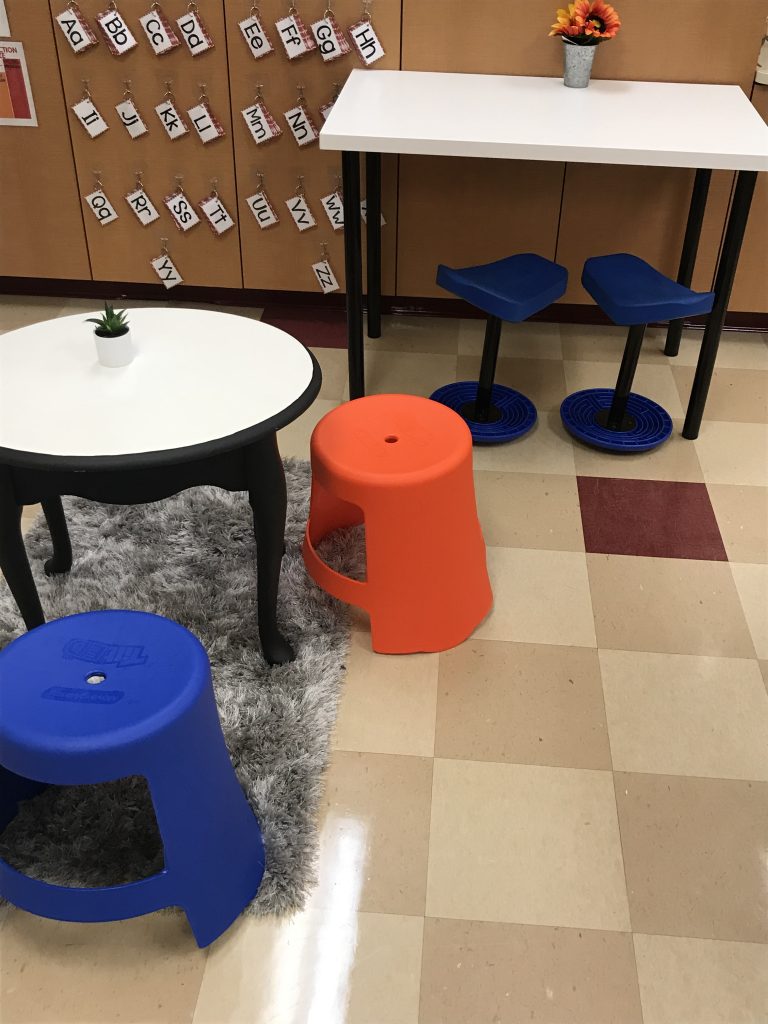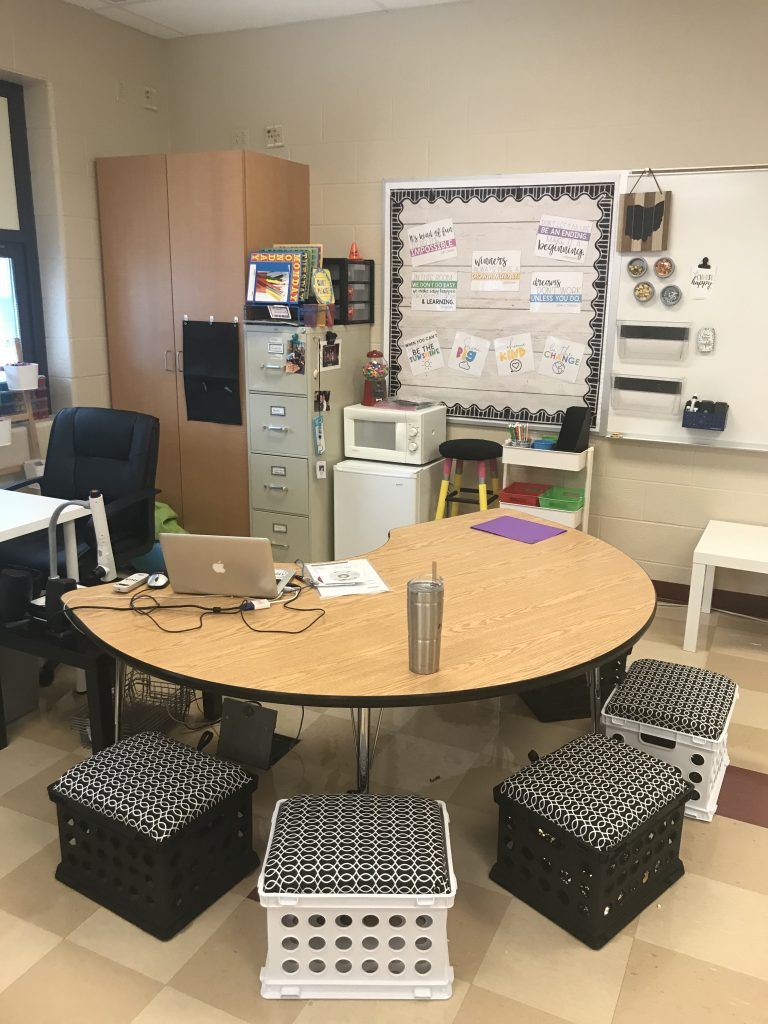Children need to move! Students cannot be expected to sit still in a normal chair for 4-5 hours a day. How can anyone expect a student to not fidget or move and learn? As a special needs teacher of students with Emotional Disabilities, I have chosen to provide my students with several seating options. Most students with special needs are diagnosed with ADHD, making movement necessary for them to be successful.
As I moved classrooms after 16 years, my principal asked me what furniture I wanted in my classroom. I told him “NONE.” I worked on my own to gain seating that would be beneficial to my students. Flexible seating such as tilted stools and rainbow rockers, allow them to wobble, rock, bounce, lean, or stand. This increases oxygen to their brain, blood flow, and core strength. It helps them burn more calories and increases metabolism. This all allows my students to be more alert and focused.

Giving Students Options
Physical activity is defined as “movement of the body that requires energy expenditure.” Every time a student chooses a flexible seating option, they are engaging in physical activity. The constant body movements allow the learning to occur at an increased rate. Teachers are not constantly telling a student to stop rocking or to stay still, as flexible seating encourages the movement.
In my classroom, the TiltED stools are by far the top choice of my kids. The stools provide them with the movement they need. They allow for rocking as well as spinning, which students love. According to research, 15 minutes of vestibular input can have a 6 to 8 hour impact on a brain and self-regulation. Therefore, the rotary vestibular input is the most powerful form of sensory input the brain can process. As long as the spinning is in a controlled and professional environment, it will most likely be beneficial to the student involved.
Daily Schedule

My daily schedule within my classroom involves movement all around the room. We are never in one place for an extended amount of time. We start the day split up individually and working on our journal prompts. Students have the choice to work wherever they wish to. Some sit on the couch, some on stools, and some on crate seats, all depending on what they want to do. My classroom has four grades—Kindergarten through 3rd grade—which makes groups very interesting.
There are 3 different math groups, so while challenging, it gives the students the time to work on individual math skills with the aide while being taught new lessons from the teacher. This is a time where they are allowed to pick their own seats as long as they don’t abuse it. This pattern continues throughout the day, with students sitting in groups and learning, while moving seats all around the room.
We are always moving and learning, which is the ultimate end goal with my idea of flexible seating. I love flexible seating and look forward to expanding my options this year.







Leave A Comment